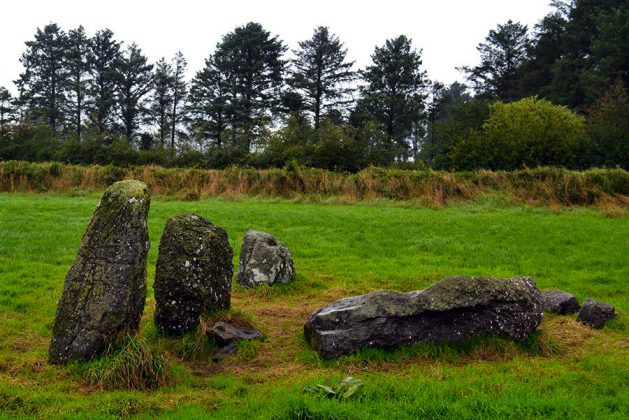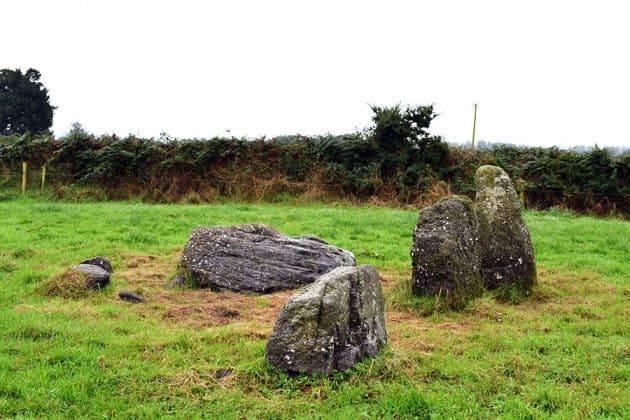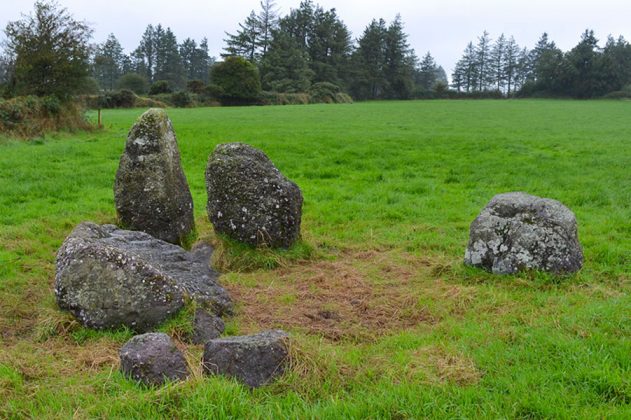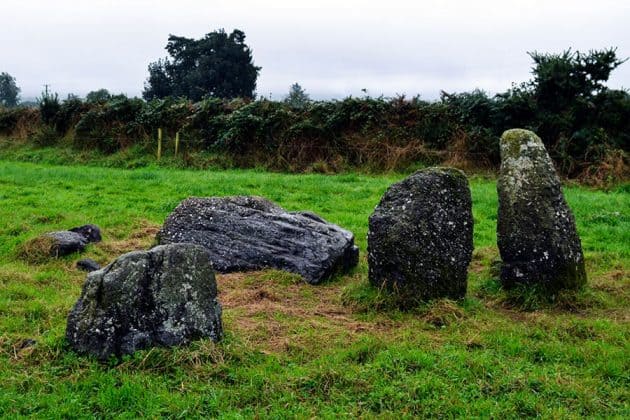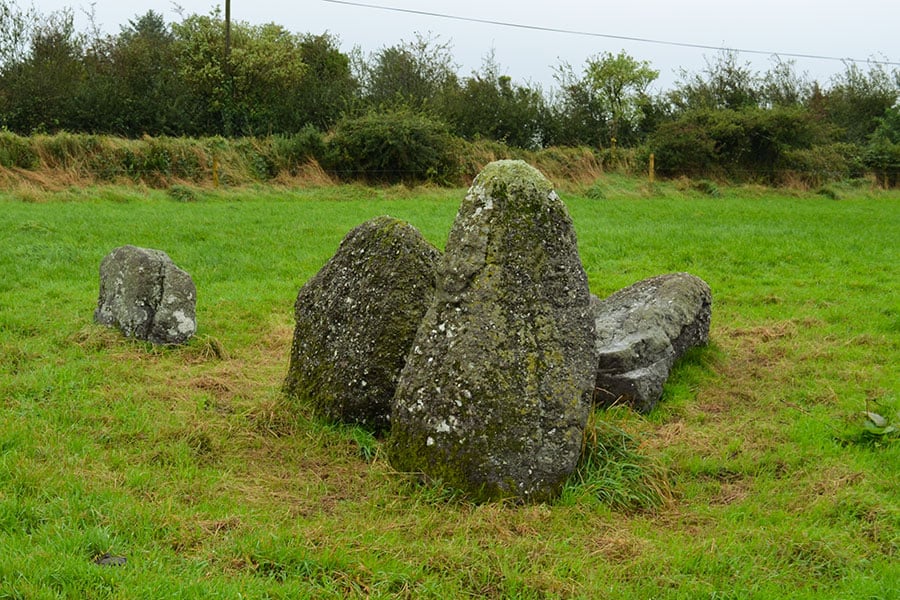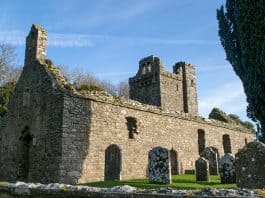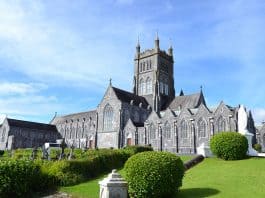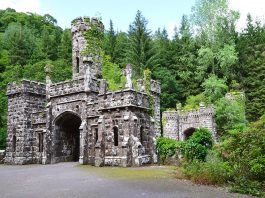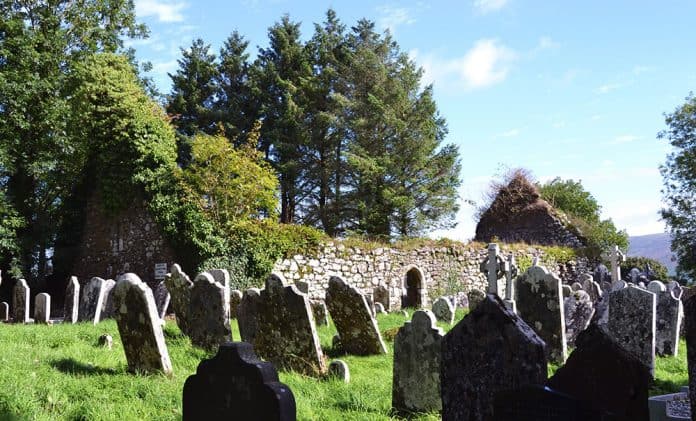
The medieval Seskinan Church (Seskinan meaning ‘little sedgy moor’) in the ancient Sliabh gCua region of County Waterford has lain in ruins for centuries.
This ancient Knockboy Church sits unobtrusively at the end of a winding lane and is surrounded by a correspondingly antediluvian graveyard.
It is packed with gravestones that range in date from the 16th century to the early 19th century.
The church’s interior is also crammed with graves.
In 2017 it was selected as one of seven monuments to receive conservation support from the Adopt a Monument Scheme run by the Heritage Council.
The most distinctive feature of the church is the fact that there are six Ogham Stones incorporated in the fabric of the building, and a seventh which stands upright in the north-west corner.
Nearby is another superb ancient megalithic feature – the Knockboy Stone Row.
Primitive Script
Ogham is the most primitive form of Irish writing, dating to around the fourth century AD. It was only in existence for approximately five hundred years.
The alphabet is formed out of a sequence of stokes across or along a line.
It is sometime called the ‘Celtic Tree Alphabet’.
This is linked to the fact that some of the letters are connected to old Gaelic names for particular trees.
This ancient writing was carved into standing stones across Ireland as a way of commemorating the dead.
The inscriptions on Ogham Stones, including those at Seskinan Church, generally read from bottom left upwards and then across the top and, if required, down the opposite side.
They are a truly outstanding characteristic of Knockboy Church, a building that sits in a landscape that boasts a number of other sites of major importance, such as the megalithic Knockboy Stone Row.
Ancient Recycling
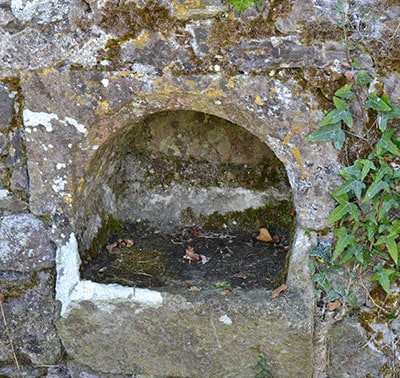
The presence of these stones here may well indicate that the church sits on the site of a far earlier place of worship.
In the late 1800s, the remains of what might have been an ecclesiastical structure were noted in a field just south of the current church, within the graveyard boundary.
The presence of such an impressive number of stones of this type is deeply culturally significant – both locally and nationally.
They also give us a fascinating insight into the medieval attitude towards re-purposing existing materials in their sacred buildings.
Floorplan and Construction
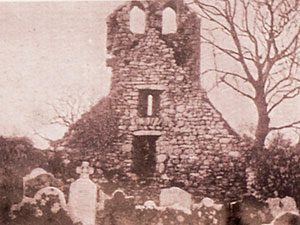
The church has a simple rectangular floor plan.
The west gable was once crowned with a double belfry with distinctively pointed arches, though this suffered storm damage in the great storm of February 1994 and is now largely obscured by ivy.
The main fabric of the church is constructed from basic rubble stones, with better-quality ‘dressed’ stones being used for the windows and doors.
There are two doors, one in the south wall and one in the north.
The north door is almost totally inaccessible.
Six of the stones with Ogham inscriptions at Seskinan serve as lintels and can be observed in the west, north and south windows and above the south door.
The stone in the north-west corner of the church is the only standing stone.
It was recorded that there was once another, but it was removed at some point to Salterbridge House near Cappoquin.
Its present location is unknown.
The Ogham Inscriptions
Southern Doorway
A sizeable stone acts as the southern doorway’s inner lintel, with the ogham inscription only just visible on its lower edge.
A round hole has been cut through the stone at its western edge – a feature that goes through some of the inscription and can consequently be presumed to post-date it.

Macalister recorded the inscription still visible on this stone as “Q[E]CC[IAS] M[U]C[OI B]R[O]E[NIONAS]” (Macalister, R.A.S. – 1945, 287)
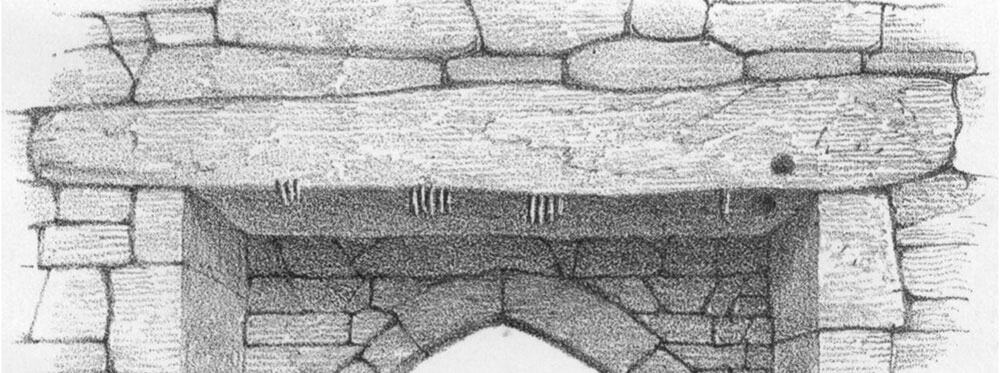
North Window Lintel near the Eastern Gable Wall
The Ogham Stone acting as the inner lintel of the north window close to the eastern gable wall of the church has had a lot of its inscription chipped away by the masons who built the church.
What remains has been transcribed by Macalister and reads as “–]ER[A]T[I] M[U]C[OI] NETA-S[EGAM]ONAS” (Macalister, R.A.S. – 1945, 286).

South Window Lintel near the Eastern Gable Wall
The Ogham Stone acting as the inner lintel of the south window from its size appears to have been a pillar stone.
A lot of the inscription on this stone is missing but what remains was transcribed by Macalister and reads as “–]RG[..]B[A]RCEN” (Macalister, R.A.S. – 1945, 286).

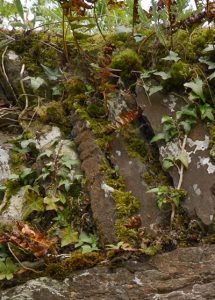
Ogham Stone fragment in the South Window Voussoir
The Ogham Stone fragment in the voussoir is the second stone from the left.
The inscription as transcribed by Macalister and reads as “CORB” (Macalister, R.A.S. – 1945, 287).
Western Gable Wall – Lower Window Lintel
This stone can be found acting as the inner lintel of the lower window in the western gable wall of the church.
The inscription on this stone is clearly visible and has been transcribed by Macalister and reads as “VORTIGURN” (Macalister, R.A.S. – 1945, 287-288).
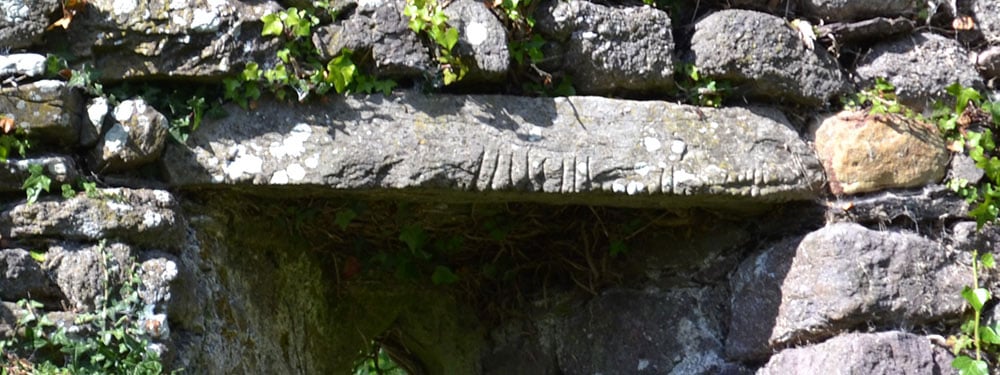
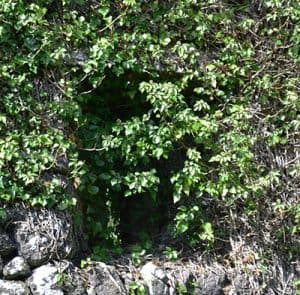
Western Gable Wall – Upper Window Lintel
This ogham stone can be found high up acting as the inner lintel over the upper window on the western gable wall of the church.
This wall is in urgent need of conservation work and it is possible that it is only the ivy that it is keeping it standing.
Because of its high location and it’s covering with ivy, it was not possible to observe the inscription.
The inscription though was transcribed by Macalister and reads as “–]CIR MAQI MUC[–” (Macalister, R.A.S. – 1945, 287-288).
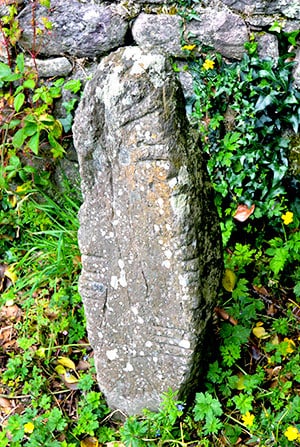
Freestanding Stone in North West Corner
The origin of this stone is unknown.
A small plain cross has been cut into the lower part of the front face of this stone.
The inscription on the stone which is composed of slate can be seen on all four angles.
The inscription is very clear and has been transcribed by Macalister and reads as “VEDABAR M[A]Q[–]LSM MOCOI ODR[–]REA” (Macalister, R.A.S. – 1945, 286).
The Missing Stone
Originally there was an eighth ogham stone at Knockboy.
This stone was moved to Salterbridge House near Cappoquin but has unfortunately since been lost.
The inscription on it was transcribed by Macalister and reads as “[MAQI] MONGEDIAS MAQI MUIBITI” (Macalister, R.A.S. – 1945, 289).
Folklore
Local folklore tells that when Seskinan Church was first constructed, Ogham Stones and all, it didn’t have a bell to summon the faithful to worship.
To solve this problem, a bell was removed from the church at nearby Kilkeany and brought to Knockboy Church.
However, once the bell was hung, it would not chime, no matter how hard it was struck.
The story goes that, one dark night, the bell broke free from its new home and travelled back to Kilkeany, chiming loudly as it went – a sound that competed with terrible shrieks and jeers emanating from an unseen presence.
Today, the nearby Knockboy Stone Row only adds to the sense of mystery and timelessness that dominates this beautiful part of Ireland.
The Knockboy Stone Row
Very close by to Seskinan Church and its Ogham Stones is a megalithic stone row known as the Knockboy Stone Row.
This type of megalithic monument is found across the British Isles, northern France and some parts of Scandinavia, and they date from the latter part of the Neolithic Age through to the Bronze Age.
The rows, made up of stones placed at intervals, vary in length from just a few metres to over a mile.
They are formed of large stones, some as high as two metres, though most are nearer the one-metre mark.
Some have a ‘graduated’ effect, though it is not clear if this effect was deliberately contrived by ancient designers.
The ends of the rows feature the most impressive stones, and there are sometimes other ancient features at the terminals, including burial sites.
Some experts believe that these stone rows were constructed to mark a ceremonial route of some sort.
Others think that each stone marks the existence of a new generation, demonstrating the continued presence of people around any given site, including the vicinity of Knockboy Church.
How to get to Knockboy Church to see the Ogham Stones and nearby Stone Row
Directions for Knockboy Church Ogham Stones:
- Take the R672 from Dungarvan towards Clonmel.
- Continue on this road for about 10km until you come to a shop/petrol station at a cross roads known as Beary’s Cross.
- A very short distance beyond this take a right turn signposted Knockboy Grave Yard (L5111).
- Travel up this road for about 1.5km until you see the signpost for Knockboy Graveyard pointing to the right.
- This leads you down a narrow lane which finishes in a parking/turning area in front of the church.
Directions for the Stone Row:
- Same as for the Ogham Stones but carry on past the turning for Knockboy Graveyard and take the next right.
- The stone row is approximately 1Km down this road in a field on your right.

